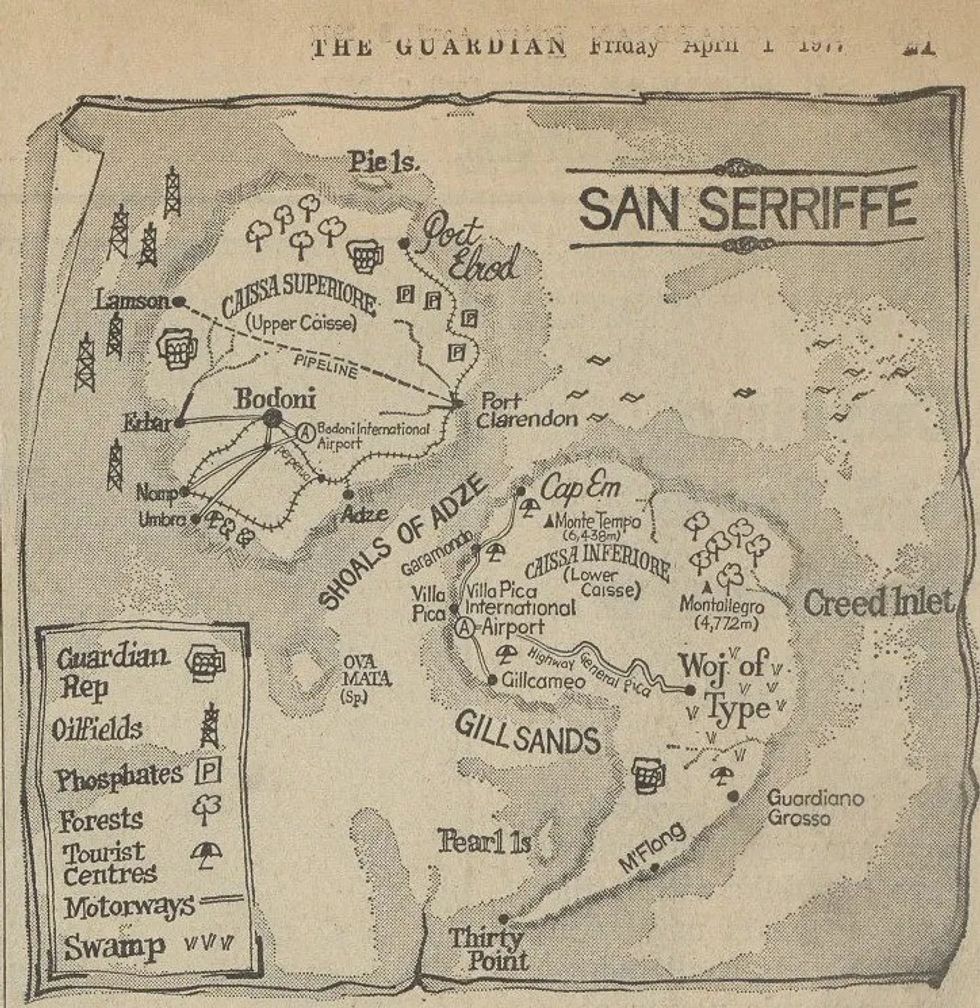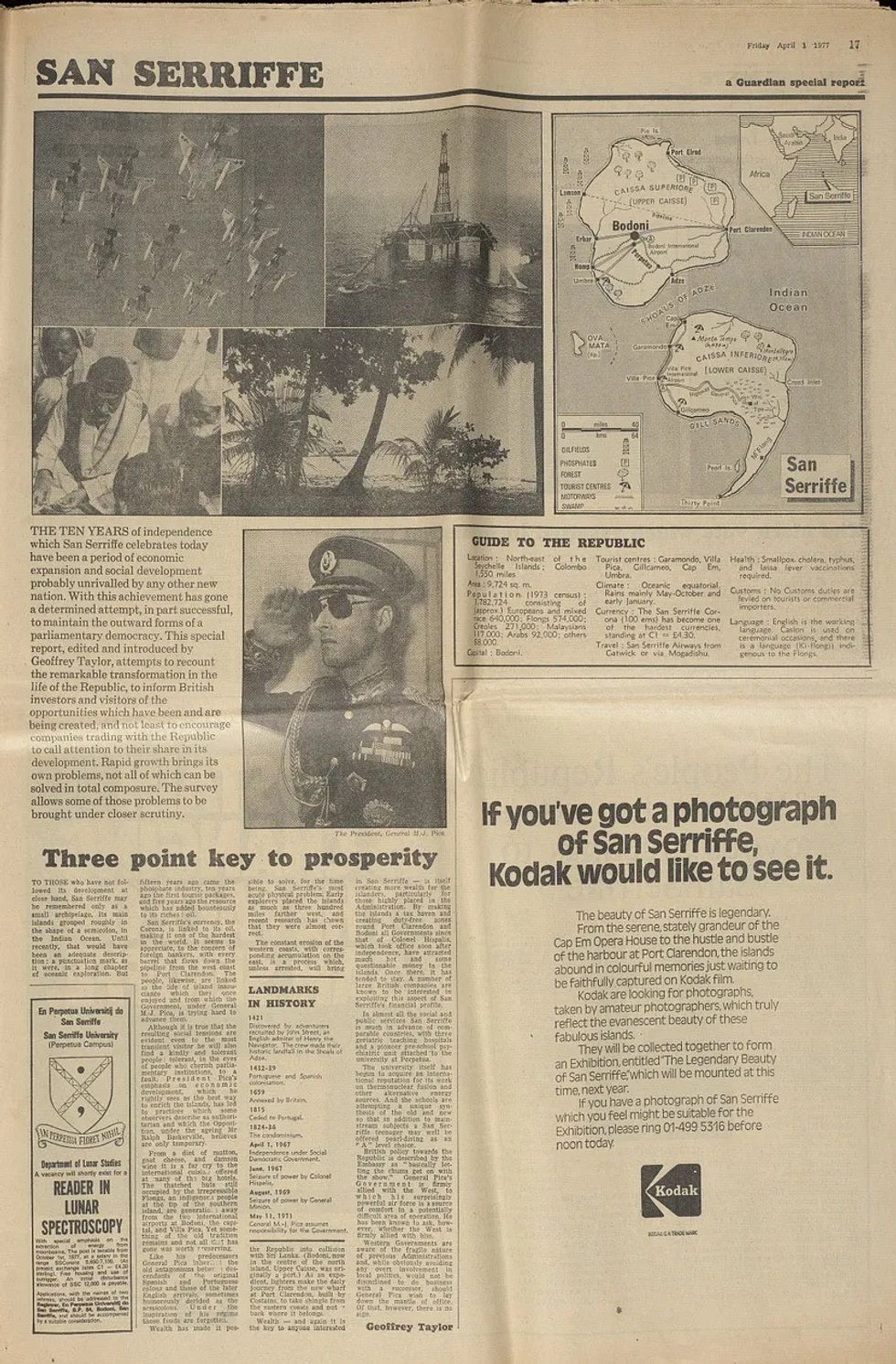On April 1st, 1977, The Guardian newspaper embarked on a whimsical journey, taking its readers to the fantastical islands of San Serriffe, a semicolon-shaped paradise nestled near the Seychelles. What ensued was a masterful blend of satire, journalistic experimentation, and social commentary that continues to captivate audiences to this day.
The Birth of San Serriffe: A Playful Endeavour
The genesis of the San Serriffe hoax stemmed from the imaginative mind of Philip Davies, The Guardian's Special Reports Manager. Tired of the conventionalism in reporting, Davies envisioned crafting a fictional nation for April Fools' Day, an idea that resonated with the irreverent ethos of the publication. Thus, San Serriffe was born, a testament to The Guardian's penchant for pushing boundaries and challenging perceptions.

Crafting the Illusion: The Anatomy of a Hoax
With meticulous attention to detail, The Guardian brought San Serriffe to life, weaving a narrative that seamlessly blended fact with fiction. From the intricate geopolitical landscape to the whimsical characters like General Pica, the faux report exuded authenticity, drawing readers into its enchanting allure. Themed advertisements from renowned companies like Guinness and Kodak further lent credence to the elaborate ruse, inviting audiences to suspend disbelief and embrace the absurdity of the tale.
The Legacy of San Serriffe: A Reflection on Humour and Cultural Impact
Decades after its inception, the San Serriffe hoax endures as a testament to the enduring power of humour and the art of storytelling. Beyond its initial reception, the prank continues to spark conversations about journalistic integrity, cultural stereotypes, and the evolving nature of media in the digital age.

Challenges and Controversies: Navigating the Terrain of Fake News
In an era plagued by misinformation and fake news, the legacy of San Serriffe takes on new significance. As society grapples with the consequences of digital manipulation and echo chambers of misinformation, the boundaries between fact and fiction blur, posing profound questions about the role of satire in modern journalism.
Looking Ahead: The Relevance of San Serriffe in Today's Media Landscape
As we reflect on the enduring legacy of The Guardian's iconic hoax, one cannot help but wonder: would San Serriffe find a place in today's media landscape? In an age dominated by social media and 24-hour news cycles, where sensationalism often trumps substance, the whimsical charm of April Fools' Day may seem like a relic of a bygone era. Yet, amidst the chaos and cacophony of the digital age, perhaps there is still room for moments of levity and satire, reminding us of the power of laughter to transcend boundaries and unite us in shared humanity.

Conclusion: A Tribute to The Guardian's Legacy of Innovation
As we celebrate the enduring legacy of The Guardian's San Serriffe hoax, we pay homage to the publication's unwavering commitment to journalistic innovation and intellectual curiosity. In an ever-changing world, where truth often seems elusive and reality stranger than fiction, The Guardian's playful spirit serves as a beacon of hope, reminding us to embrace the absurdities of life and find joy in the unexpected.






 Priyanka Chopra calls herself nascent in Hollywood as 'Heads of State' streams on Prime VideoGetty Images
Priyanka Chopra calls herself nascent in Hollywood as 'Heads of State' streams on Prime VideoGetty Images  Priyanka Chopra wants to build her English film portfolio after Bollywood successGetty Images
Priyanka Chopra wants to build her English film portfolio after Bollywood successGetty Images  Ilya Naishuller, Priyanka Chopra and John Cena attend the special screening for "Head of State" Getty Images
Ilya Naishuller, Priyanka Chopra and John Cena attend the special screening for "Head of State" Getty Images








 Arijit Singh performing Instagram/
Arijit Singh performing Instagram/ Arijit Singh clicked during a performance Getty Images
Arijit Singh clicked during a performance Getty Images 


 Liam Gallagher accepts Oasis' award for 'Best Album of 30 Years' Getty Images
Liam Gallagher accepts Oasis' award for 'Best Album of 30 Years' Getty Images  Liam Gallagher plays to a sell out crowd at the Universal AmphitheatreGetty Images
Liam Gallagher plays to a sell out crowd at the Universal AmphitheatreGetty Images Liam and Noel Gallagher perform together in Cardiff for the first time since 2009 Instagram/oasis
Liam and Noel Gallagher perform together in Cardiff for the first time since 2009 Instagram/oasis